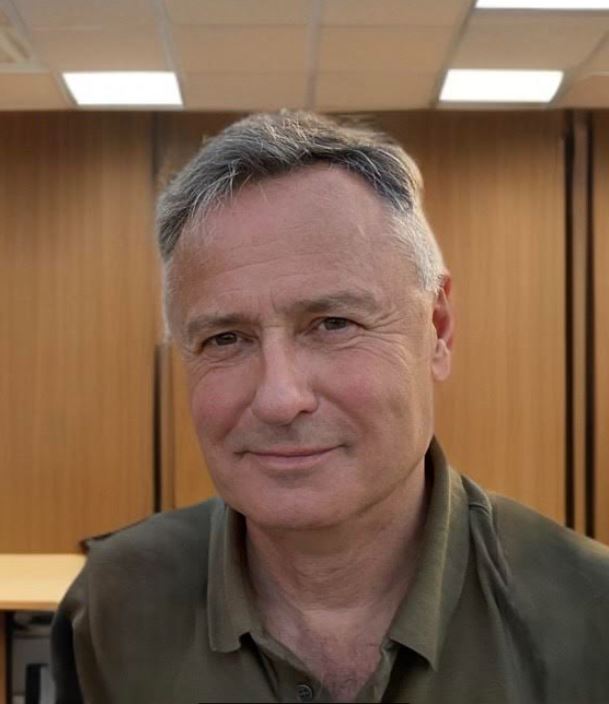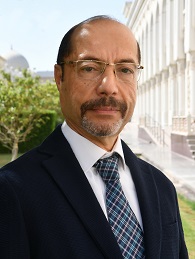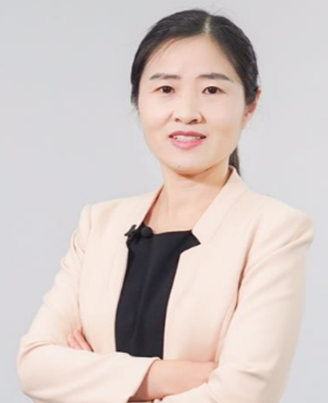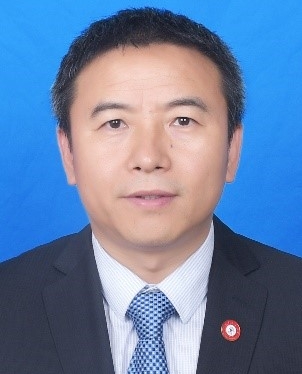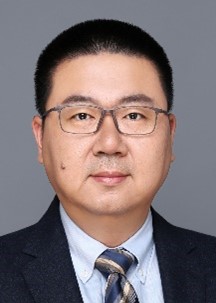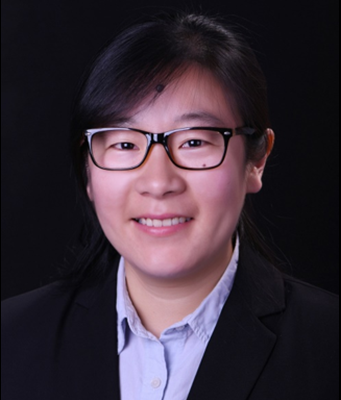Keynote Speakers
Prof. Henryk Paul
Institute of Metallurgy and Materials Science, Polish Academy of Sciences, PolandSpeech Title: Microstructural Evolution, Phase Transformations, and Mechanical Characterization of Multilayered Metallic Composites for Advanced Applications
Abstract: New strategies in the development of metallic composites for advanced structural applications involve the synthesis of bulk materials. Multilayered systems with metallurgical bonding, consisting of two alternating layers of different metals, represent a notable example of such materials. In many cases, the high density of interfaces between layers has a beneficial impact on the overall properties of the composite materials. This effect creates both opportunities and challenges for technological applications, particularly concerning the mechanical response of the material and its ability to shield electromagnetic fields. Since interfaces govern the properties of nano-/micro- composite plates, the evolution of microstructure during the deformation of individual layers and the role of interfaces in composite strengthening remain topics of significant interest.
The aim of this research program was to develop and conduct a detailed structural analysis of multilayered composite materials based on combinations of metals that: (i) form and (ii) do not form intermetallic phases in the solid state. In both systems, local melting and rapid solidification near the interfaces resulted in regions composed of phases with highly varied chemical compositions and structures. The multilayer plates were produced via single-shot explosive welding (EXW). The evolution of the microstructure and phase transformations at all stages of deformation and heat treatment were analysed using advanced scanning (SEM) and transmission (TEM) electron microscopy techniques. These morphological analyses were correlated with phase transformation studies using synchrotron X-ray radiation and mechanical property evaluations via shear strength and micro-/nano- hardness measurements.
In the first group of metal compositions (forming intermetallic phases), this study investigates transformations occurring at the bonding zones of AZ31/AA1050 and Ti (Grade 1)/AA1050 multilayer plates. In the AZ31/AA1050 system, apart from the two equilibrium phases, γ-Mg₁₇Al₁₂ and β-Mg₂Al₃, a significant fraction of the solidified melt regions consisted of non-equilibrium phases exhibiting amorphous or ultrafine-grained structures. During subsequent annealing, a pronounced growth of γ-Mg₁₇Al₁₂ and β-Mg₂Al₃ phases was observed near all interfaces from the early stages of heat treatment, while the phases within the pre-existing reaction regions systematically transformed into the β-Mg₂Al₃ phase. For annealing durations exceeding 10³ hours, an intermediate ε-Mg₂₃Al₃₀ phase layer emerged between the β and γ phase layers. These transformations ultimately converted the initial AZ31/AA1050 multilayer system into a γ-Mg₁₇Al₁₂/ε-Mg₂₃Al₃₀/β-Mg₂Al₃ structure. In the Ti (Grade 1)/AA1050 system, the solidified melt regions were dominated by non-equilibrium phases, with only a minor presence of the crystalline Al₃Ti phase. Heat treatment led to the nucleation of a continuous Al₃Ti phase layer between the Al and Ti sheets, accompanied by the transformation of non-equilibrium phases into structurally heterogeneous Al₃Ti. Conditions determining the transformation of the Ti(Gr.1)/AA1050 multilayer system into a Ti(Gr.1)/Al₃Ti multilayer system were proposed.
In the second group of metal compositions (not forming intermetallic phases), the layers adjacent to the interfaces exhibited complex and hierarchical microstructures. After EXW, the reaction zones consistently comprised a mixture of nanoparticles and fine dendrites of pure Cu and the reactive metals (Ta, Nb, or Fe). Notably, no brittle intermetallic phases were observed near any of the interfaces in these composites. However, the microhardness of the solidified melt regions was 2–3 times higher than that of the annealed base materials, with values of 469 HV, 455 HV, and 480 HV for the Ta/Cu, Nb/Cu, and Cu/Fe-armco combinations, respectively. The large interface area per unit volume was found to enhance both the mechanical properties and electromagnetic shielding effectiveness of the material, offering unique opportunities and challenges for technological applications.
Biography: Professor Henryk Paul received his Doctor of Engineering degree from the Institute of Metallurgy and Materials Science (IMMS) at the Polish Academy of Sciences in Kraków, Poland, in 1989. After serving as an assistant professor, he was promoted to associate professor in 2003 and to full professor in 2010, all at IMMS PAS. He has completed numerous fellowships and internships at French institutions, including an extended stays at the École des Mines de Saint-Étienne and several study visits to LLB Saclay and Université Paris-Sud. He has authored over 290 original papers, 22 book chapters, and 22 review papers on various aspects of phase transformations. His research interests include explosive welding technology, the formation of plastic flow instabilities during the semi-static and high strain rate deformation of metallic materials, recovery and recrystallization phenomena associated with the phase transformations. He has been a plenary, keynote, or invited speaker at 42 international conferences. His publications have been cited over 2,400 times, and he has an h-index of 31.
Prof. Tahar Laoui
Department of Mechanical and Nuclear Engineering,College of Engineering, University of Sharjah, The United Arab Emirates
Speech Title: Ceramic Membranes: Pioneering a New Era in Water Treatment Technologies
Abstract: Ceramic membranes are emerging as a sustainable solution for water treatment, offering significant advantages over conventional polymeric alternatives. Their exceptional durability, thermal and chemical stability, and resistance to fouling position them as valuable components in diverse applications ranging from reverse osmosis (RO) pre-treatment to advanced wastewater reuse. The presentation will examine the role of ceramic membranes in municipal, industrial, and desalination systems, highlighting their ability to remove suspended solids, microorganisms, and organics under challenging water conditions. Comparative analysis will highlight lifecycle performance, economic considerations, and operational reliability relative to polymeric membranes. Case studies from global practice, including municipal reuse projects in Europe; treatment of complex industrial effluents; and large-scale seawater desalination in the Middle East, will illustrate practical benefits and operational constraints. The session will conclude with a discussion on future opportunities for integrating ceramic membranes into sustainable water management strategies, emphasizing their potential to extend membrane lifespan, reduce chemical consumption, and enhance system resilience in an era of growing water scarcity.
Biography: Professor Tahar Laoui received his PhD from the University of Washington, Seattle (USA). Keywords describing his research interests include development of advanced and nanostructured materials, nanocomposites, membranes for water treatment/desalination, and additive manufacturing. He has participated in many research projects throughout his academic career. In the area of materials and membranes development, while Professor at King Fahd University of Petroleum and Minerals (KFUPM, Saudi Arabia) in collaboration with colleagues from Mechanical Engineering Dept. at MIT (USA), he worked on a joint research project related to the development of inorganic membranes for water treatment and desalination by exploring techniques to investigate and understand the transport of water molecules and ions through macro- and nano-structured materials such as zeolites, alumina-based ceramics, carbon nanotubes and graphene. He was Fellow of The Institute of Materials, Minerals and Mining (IMMM, UK), member of the editorial board of several journals including Materials Letters, Membranes, npj Clean Water. He has served as a reviewer/member of the review committee for many journals and national/international conferences. He has published over 200 refereed journal/conference papers and conference abstracts and 16 issued patents.
Prof. Yanli Lu
State Key Laboratory of Solidification Processing,Northwestern Polytechnical University, China
Speech Title: Composition Design and Validation of Au–Pt Alloys with Ultra-low Magnetic Susceptibility: Insights from First-principles and Experiments
Abstract: Gold-platinum (Au-Pt) alloy has aroused considerable attention due to its ultra-low magnetic susceptibility (MS) in testing mass (TM) on spacecraft. However, the effect of Au content on the properties of the alloy has not yet been understood. In this study, the composition design of Au-Pt alloy with ultra-low MS was achieved through density functional theory (DFT) and experimental methods. The elastic, thermal properties and electronic structure were systematically investigated, the composition range was further optimized and Au75Pt25 was determined to be the most suitable alloy for TM material. The phase composition of this alloy after cold rolling and solid solution was characterized, indicating a single-phase FCC structure. In addition, there is a good validation between the experimental Vickers hardness and the DFT results. This work provides new insights into the compositional optimization of Au-Pt alloys and lays the foundation for alloy development.
Keywords: Au-Pt alloy, ultra-low magnetic susceptibility, composition design, first principles, HAADF-STEM
Acknowledgements: This work was supported by the National Key R&D Program of China (2021YFC2202300), the National Natural Science Foundation of China (NSFC) (Grant No. 51974258), and National College Students Innovation and Entrepreneurship Training Program (S202210699134). The authors acknowledge Beijing PARATERA Tech CO., Ltd. for providing HPC resources that have contributed to the research results reported within this paper.
Biography: Yanli Lu is a Professor and Ph.D. supervisor at the School of Materials Science and Engineering, Northwestern Polytechnical University. Her research focuses on multiscale studies of microstructure and properties of advanced fundamental, strategic, and frontier materials, integrating experiments, first-principles calculations, phase-field modeling, and machine learning. She has led four projects funded by the National Natural Science Foundation of China and has published over 110 papers in prestigious journals such as International Journal of Fatigue, Computational Materials Science, and Journal of Materials Science and Technology, with more than 100 indexed by SCI.
Prof. Zhicheng Zhang
School of Chemistry, Xi’an Jiaotong University, ChinaSpeech Title: The Crystallization Behavior of Polypropylene Films Regulated by Polar Groups Significantly Improves Energy Storage Performance
Abstract: To address the increasing demand for high-temperature resistance and energy storage performance in modern power electronic devices, this study introduces a novel strategy: modifying polypropylene (PP) films with methyl acrylate trifluoroethyl methacrylate (TFEMA), which contains fluorinated groups, and the polar, electron-deficient molecule 8-hydroxyquinoline (8-HQ). First, kilogram-scale polypropylene grafted with trifluoroethyl methacrylate (PP-g-TFEMA) was successfully prepared. By regulating α-phase crystallization, the films achieved a breakdown strength (Eb) of 865 MV/m and an energy storage density (Ue) of 8.2 J/cm³, with a discharge efficiency (η) exceeding 90%, while retaining excellent processability, self-healing capability, and reliability. Second, 8-HQ molecules were found to capture charges under high electric fields, suppress leakage current, and unexpectedly promote grain growth at the polypropylene interface, thereby enhancing mechanical strength and yielding an Eb of 814 MV/m. In combination with the increased dielectric constant, this enabled a remarkable Ue of 9.87 J/cm³, with η exceeding 90%, and Ue maintained at 6.96 J/cm³ even at 125°C. These findings significantly surpass previously reported results, representing a breakthrough in advancing polypropylene-based dielectric films for high-performance energy storage capacitors.
Keywords: Crystallization, trifluoroethyl methacrylate, 8-Hydroxyquinoline, dielectric energy storage, polypropylene film
Acknowledgements: The authors are grateful for the support and funding from the National Natural Science Foundation of China (Grant No. 92066204, 52373021, 52403074, 52473062), National Key Research and Development Program of China (Grant No. 2023YFB3208400), the Fundamental Research Funds for the Central Universities (No. xzy012024055), Postdoctoral Fellowship Program of CPSF under Grant No. GZC20241337. The author thanked the Instrument Analysis Center of Xi’an Jiaotong University for material characterization.
Biography: Polyvinylidene fluoride (PVDF)-based fluoropolymers are widely used in many fields due to their excellent chemical resistance, heat resistance, aging resistance, weather resistance and solvent resistance. PVDF-based fluoropolymers have high dielectric constants and have been widely used in electromagnetic railguns, electromagnetic catapults, high-resolution sonars, high-sensitivity sensors and other major national needs since their piezoelectricity and subsequent dielectric, ferroelectric, and pyroelectric properties were reported.
The research areas of this team mainly include the design of new fluoropolymers, modification methods, structure-property relationship and regulation of fluoropolymer materials, electroactive fluoropolymers and their applications in high energy storage capacitors, sensors and other fields, as well as the controllable synthesis of novel high-energy-storage polymer dielectric materials, etc.
Our research interests are as follows:
1) Organofluorine Chemistry and Chemical Modification of Fluoropolymers
2) Design and controllable synthesis of advanced energy storage polymers
3) Research on Energy Storage Polymer Composite Dielectric
4) Smart Materials Synthesis and Sensor Applications
5) Biomedical Functional Materials
Prof. Li Jin
Electronic Materials Research Laboratory, Key Laboratory of the Ministry of Education,School of Electronic Science and Engineering, Xi'an Jiaotong University, China
Speech Title: Polarization Regulation Strategies in Relaxor Ferroelectric Ceramics for Enhanced Energy Storage Performance
Abstract: Relaxor ferroelectric ceramics have garnered significant attention for their potential in energy storage applications due to their unique polarization characteristics. However, achieving high energy-storage density (Wrec) and energy-storage efficiency (η) while maintaining material reliability remains a key challenge. This study consolidates two innovative approaches to design and optimize relaxor ferroelectricity and polarization regulation in (Bi0.5Na0.5)TiO3 (BNT)-based ceramics, leading to exceptional energy storage performance. The first approach employs entropy engineering, leveraging local polar fluctuations and high-entropy design to regulate the energy storage performance of BNT-based dielectrics. By optimizing the atomic configurational entropy in 0.85(Bi0.375Na0.3Sr0.25K0.075)TiO3-0.15 Bi(Mg0.5Sn0.5)O3 ceramics, the study achieves an outstanding Wrec of 11.24 J/cm³ and η of 88.3% under 610 kV/cm. The high-entropy ceramics exhibit remarkable discharge characteristics and temperature stability, demonstrating the efficacy of entropy manipulation in enhancing dielectric performance. The second strategy focuses on mitigating polarization-strain coupling in multilayer ceramic capacitors (MLCCs) to address fatigue and ultrasonic damage in pulse power systems. By designing a composition with ultra-low electrostrictive coefficient (Q33) of 0.012 m4/C2 in 0.55(Bi0.5Na0.5)TiO3-0.45Pb(Mg1/3Nb2/3)O3, the study achieves a minimal strain of 0.118% at 330 kV/cm. This approach enables a significant ESP of 7.6 J/cm³ and an ultrahigh η of 93% under 720 kV/cm, ensuring excellent fatigue resistance and temperature stability. Collectively, these advanced design strategies underscore the potential of tailored relaxor ferroelectric ceramics in next-generation energy storage applications, offering a path forward for achieving high-performance, reliable, and efficient dielectric materials.
Keywords: Relaxor ferroelectric ceramics, energy storage performance, entropy engineering, polarization-strain coupling
Biography: Li Jin holds the esteemed position of professor at Xi’an Jiaotong University (XJTU) in China. He received his B.S. and M.S. degrees in Electronics Science and Technology from the XJTU in 2003 and 2006, respectively. He obtained his Ph.D. from the Swiss Federal Institute of Technology-EPFL in Lausanne, Switzerland, in 2011. Subsequently, from 2011 to 2012, he undertook a postdoctoral research fellowship at the Ceramics Laboratory of EPFL. His research encompasses the fields of ferroelectric, electrostrictive, and dielectric materials, with a particular focus on their integration into passive systems and electronic devices. He has published more than 180 articles in academic publications, which have been cited over 15,000 times.
Prof. Xuetao Shi
School of Chemistry and Chemical Engineering,Northwestern Polytechnical University, China
Speech Title: 3D-Printed Multifunctional TPU/ANF/CNT Composite Foams with Synergistic Energy Absorption and Real-Time Pressure Sensing for Smart Protective
Abstract: The development of lightweight, customizable materials with high energy absorption capacity has become critically important across engineering disciplines, driven by escalating demands for impact protection in dynamic environments. Herein, a lightweight interpenetrating-network composites with aramid nanofibers (ANF)/carbon nanotubes (CNT) aerogel-filled thermoplastic polyurethane (TPU) gyroid-structured foam was developed through 3D printing and infiltration processes. The 3D-printed customizable TPU foam with both the macro-scale porous structure and micro-scale cellular structure provides superior wearer comfort, elasticity and energy absorption, while the ANF/CNT aerogel further enhances energy absorption and enables real-time pressure sensing. Furthermore, the tunable mechanical strength TPU foam allows the composite structure to sense pressures up to 0.9 MPa (at 50% strain). Prototype validation in protective equipment applications—including impact-adaptive sports pads and smart helmets—demonstrates real-time pressure mapping capabilities. This multifunctional composite system, combining mass-customizable fabrication, exceptional energy dissipation, and embedded sensing intelligence, establishes a new paradigm for next-generation smart protective materials.
Keywords: Thermoplastic polyurethane, aramid nanofiber, carbon Nanotube, 3D printing, pressure sensor, energy absorption
Biography: Dr. Xuetao Shi received her Ph.D (2011) from Pisa university. She is currently a professor in School of chemistry and chemical engineering, Northwestern Polytechnical University. Her research interests include the design and synthesis of biodegradable polyesters, multifunctional polymer composites and polymer processing technologies including 3D printing and microcellular foaming. She is the principal investigator of some projects granted by National Natural Science Foundation of China and the Natural Science Foundation of Shaanxi Province.


